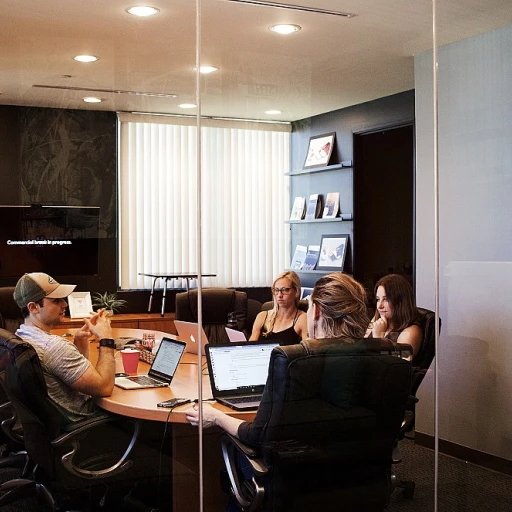Understanding the Importance of Team Building in New Zealand
Fostering Collaboration through Team Building Initiatives
Team building stands as a fundamental component of workplace harmony and productivity in New Zealand. Teams that are built on trust, cooperation, and effective communication can overcome challenges more efficiently, leading to improved overall performance. These initiatives not only boost morale but also help in strengthening bonds among team members, enhancing their collective problem solving and decision making skills. In the context of New Zealand workplaces, diverse team dynamics call for strategic activities tailored to the unique cultural and professional landscape. Organizations across the nation have recognized the need to engage employees in creative problem solving activities that foster a sense of unity and direction. From virtual team scenarios to in-person engagements, these activities aim to enhance collaboration and communication, paving the way for a more cohesive work environment. Building activities vary significantly, ranging from team games designed to offer a fun, lighthearted experience, to challenging problem solving exercises like a scavenger hunt or an escape room challenge. Each of these activities is designed to cater to groups of different sizes and people, ensuring every team member gets the chance to engage, collaborate, and contribute. Incorporating these activities into regular work routines can be transformative. Whether it's through a quick 20-minute egg drop challenge or a longer, more immersive murder mystery game, providing room for problem solving and collaboration promotes a culture of continuous improvement and innovation. By cultivating an environment rich with effective communication tools beyond traditional email, New Zealand companies can nurture stronger, more adaptable teams. Through understanding and addressing the unique challenges faced by teams, organizations can better position themselves for success, driving not only individual growth but also overall corporate objectives.Identifying Common Challenges in New Zealand Workplaces
Common Challenges in Kiwi Workplaces
In the landscape of New Zealand workplaces, several common challenges can impede team effectiveness and harmony. Understanding these challenges is crucial for developing creative problem solving methods and enhancing the team dynamics. Firstly, New Zealand teams often grapple with a diverse cultural makeup, where different communication styles and work ethics can lead to misunderstandings. While diversity enriches team creativity, it can also create barriers if not managed well. Language differences and cultural assumptions can affect how team members collaborate. Another challenge lies in the varying levels of problem-solving skills among team members. Some team members may excel in analytical thinking, while others might bring creativity and outside-the-box strategies to the table. Balancing these skills to utilize everyone's strengths requires careful consideration and structured activities. The dynamics of both virtual teams and in-person groups also present unique difficulties. Virtual teams may struggle with communication and building a sense of connection, as the physical separation can lead to team members feeling isolated. Conversely, in-person teams may deal with the stress of a high-pressure environment, which can hinder collaborative problem solving. Team size can also be a factor; larger groups may face challenges in coordinating efforts and ensuring all voices are heard, while smaller teams might deal with the lack of diverse perspectives when solving problems. Activities like escape rooms or building games can help in these scenarios, adapting the exercise to fit the group size and needs. By identifying these challenges, companies can select and implement creative activities that foster collaboration and enhance team problem solving. Activities such as a murder mystery game or an egg drop competition can inject fun into learning and encourage participation from all members. Investing time in building strong teams yields benefits far beyond the duration of the activities themselves. For insights on fostering effective communication and cultivating a vibrant corporate culture within the New Zealand context, we recommend exploring effective communication tools beyond email.Creative Problem Solving Exercises for Team Building
Innovative Exercises to Improve Problem Solving in Teams
To make a significant impact on team dynamics, incorporating creative problem-solving exercises into your routine can be a game-changer. These activities not only enhance team skills but also nurture trust, communication, and decision-making abilities among team members. Here are some innovative exercises that can be immensely beneficial:- Escape Rooms: Physical or virtual escape rooms can be great for teams of all sizes. These activities challenge team members to work cohesively under time constraints to solve puzzles and mysteries. They enhance problem-solving skills and push team members to think outside the box.
- Scavenger Hunt: An engaging scavenger hunt can drive teams to collaborate and communicate effectively as they search for clues and complete tasks within the stipulated time. It's fun and ideal for boosting team spirit.
- Murder Mystery Games: A simulated murder mystery can bring out the inner detective in team members as they unravel mysteries in a structured narrative. This builds not only problem-solving skills but also encourages lateral thinking and resourcefulness.
- Egg Drop Challenge: In this activity, teams design and build a contraption to protect an egg from breaking when dropped from a height. It fosters innovation and creativity while emphasizing the importance of trial and error in problem-solving.
Implementing Problem Solving Activities in the Workplace
Creative Ways to Engage Teams in the Workplace
Implementing problem solving activities is a key strategy to enhance team dynamics in the workplace. These activities not only bring team members together but also engage them in solving challenges collectively. Here’s how to incorporate these exercises effectively:- Customize Activities to Your Team Size: Depending on the number of team members, activities should be tailored to fit the group. Smaller teams might benefit from more intimate, discussion-based tasks, whereas larger teams can participate in activities like escape rooms or scavenger hunts.
- Include Both Physical and Virtual Options: With remote work becoming more common, it's crucial to offer virtual team building games. Virtual escape rooms or murder mystery games can be a fun way to engage remote team members. This inclusivity ensures everyone, regardless of location, has an opportunity to participate.
- Incorporate Diverse Problem Solving Games: Introducing a mix of activities such as decision making exercises, egg drop challenges, or even building games can cater to different problem solving skills. These activities encourage creativity and push team members to think outside the box.
- Set Clear Objectives and Time Limits: Clearly defining the goals of each activity helps ensure that participants understand the purpose and work towards it. Setting a specific time, such as 30 minutes, can create urgency, mimicking real-world problem solving scenarios.
- Evaluate the Effectiveness: After the activities, team members should discuss what was learned and how it can be applied to their work. This reflection can be key to solidifying the skills gained and maintaining team synergy.
Measuring the Impact of Team Building Exercises
Evaluating the Effectiveness of Team Building Initiatives
To ensure that team building activities make a significant impact on workplace dynamics, implementing a robust measurement framework is crucial. Companies in New Zealand can achieve this by focusing on several key metrics that reflect the effectiveness of problem solving exercises.- Participation and Engagement: One of the primary indicators is how fully team members engage in activities like escape rooms or murder mystery games. Higher participation levels often correlate with increased interest and learning.
- Improvement in Collaboration Skills: Post-activity assessments can help determine whether there's been a tangible improvement in collaboration and communication skills among team members. Teams that engage in group activities such as scavenger hunts or the egg drop challenge may show enhanced teamwork capabilities.
- Feedback from Team Members: Gathering feedback through surveys or discussions is vital. Team members should be encouraged to share their thoughts on the fun and effectiveness of the problem solving exercises. This feedback can provide valuable insights into what worked well and what could be improved.
- Impact on Team Dynamics: Over time, fostering team spirit through creative problem-solving activities should result in an observable change in team dynamics. This might manifest as increased trust, improved decision making, and a more cohesive work environment.
- Goal Alignment: It’s important to assess whether the team building activities align with the company’s overarching objectives. For instance, if the aim was to enhance problem-solving skills, did teams report feeling more confident in handling challenges after the activities?
Case Studies: Success Stories from New Zealand Companies
Real-World Examples of Creative Problem Solving in New Zealand
In New Zealand, companies are increasingly recognizing the value of creative problem solving activities to enhance team dynamics. These activities not only foster collaboration but also improve decision making and problem solving skills among team members. Let's explore some success stories that highlight the effectiveness of these strategies.
Escape Rooms: A Test of Teamwork and Ingenuity
One notable example comes from a mid-sized tech company that incorporated escape rooms into their team building activities. The exercise required team members to work together under time constraints, solving puzzles and making quick decisions to "escape" within the allotted time. The activity not only boosted morale but also improved communication and trust among team members, as they learned to rely on each other's strengths to solve problems efficiently.
Virtual Team Challenges: Bridging the Distance
With the rise of remote work, a prominent New Zealand financial firm turned to virtual team building activities to keep their dispersed teams engaged. They organized virtual scavenger hunts and murder mystery games, which required participants to collaborate and communicate effectively despite being miles apart. These virtual team challenges helped maintain a sense of unity and camaraderie, proving that distance doesn't have to be a barrier to effective teamwork.
Egg Drop Challenge: Encouraging Creativity and Innovation
In another instance, a creative agency utilized the classic egg drop challenge as a fun and engaging way to foster innovation. Team members were tasked with designing a contraption to protect an egg from breaking when dropped from a height. This activity encouraged out-of-the-box thinking and highlighted the importance of diverse perspectives in problem solving. The success of this activity was evident in the increased creativity and confidence among team members in tackling work-related challenges.
Measuring Success and Looking Forward
These case studies demonstrate that creative problem solving activities can have a significant impact on team dynamics. By implementing such exercises, companies not only address common workplace challenges but also cultivate a culture of collaboration and innovation. As more New Zealand companies embrace these strategies, the potential for enhanced team performance and satisfaction continues to grow.











